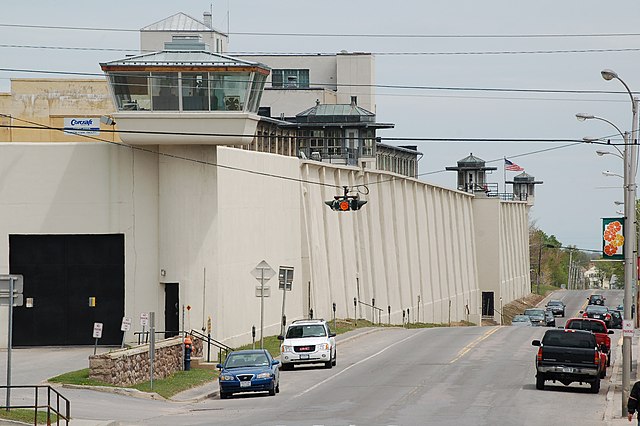The Sentencing Project recently released a report that found the number of incarcerated women in America is over five times higher than in 1980.
“That’s even after a reduction of a 30% in terms of the overall number of women incarcerated in 2020,” Nazgol Ghandnoosh, a Senior Research Analyst for The Sentencing Project, told L.A. Weekly. “I think it’s important to realize that. That 30% reduction in the year 2020 sounds like a really high number, but we’re starting off at such a high point that it still doesn’t make enough of a dent in the incarceration levels that women are experiencing.”
As we began to dive into the numbers from the Incarcerated Women and Girls report with Ghandnoosh, we asked how much the War on Drugs and the numerous nonviolent offenses that came with it impacted these numbers over the years. Ghandnoosh argued the War on Drugs had an even bigger impact on female incarceration rates over the years than on males.
“It was exactly 26 percent of women, for the last year that we have data in state prisons, who were there for a drug offense as their most serious crime,” Ghandnoosh said. “In comparison to that for men the proportion is 13 percent. So women are much more likely than men to be in prison for drug offenses. But still, some people might think that the proportion of people in prison for drug crimes would be even higher than that.”
One of the things that makes identifying the actual number of people in prison for drugs difficult is the fact sometimes the crime that put them in prison, with sentences that tended to run longer than a year, was in the commission of raising the funds they needed to buy more drugs. But that “drug crime” isn’t reflected as it would be with a typical offense associated with someone with a substance use disorder.
Ghandnoosh does her best to keep it real for her many peers on the drug policy reform side working on the issue, it’s just her reform umbrella is a bit broader.
“Their impression is that the war on drugs has had a much bigger impact, but that’s to some extent inflated because a lot of people are in prison for more serious offenses,” Ghandnoosh said.
Another confusing part of the numbers is when someone gets in trouble for using drugs while on probation as they continue to deal with the same issues that landed them in the courts in the first place but not yet a cage.
“If the person uses drugs while they’re on probation, they can get sent back to central prison and they’re considered to be in prison because of a property crime, the underlying burglary offense, but it’s because of the drug war that the final decision is made to incarcerate them,” Ghandnoosh said.
Ghandnoosh went on to speak on some of the data points she found more fascinating. The report finds that racial disparities in incarceration have started to narrow in the last few decades. That’s especially true for women.
This includes a 68% decrease in Black women in prison between 2000 and 2020.
“However, that doesn’t mean that we solved the problem of racial inequality and women’s incarceration because even at that level, Black women are still imprisoned at practically twice the rate of white women,” Ghandnoosh said. “But part of the reason the disparity has reduced is that the rate of imprisonment for white women has not declined. It’s actually gone up to some extent.”
Ghandnoosh explained there are a lot of different things going into those numbers. Part of it has to do with the fact that Black women and people of color are more likely to live in urban areas where the most progress has been made in scaling back mass incarceration, and white women are more likely to be living in suburban rural areas where there’s been more resistance to reform. This has seen the number of white women in prison rise 12%.
“In particular for white women who live in rural areas who have drug or drug problems, they’re in environments where access to treatment is much more limited,” Ghandnoosh said. “And so there’s more willingness on the part of criminal justice practitioners to say, well, we can’t offer anything else to them.”
Ghandnoosh went on to compare Massachusetts’ rate of women’s imprisonment, where six per 100,000 women are imprisoned, with Idaho and its 110 women per 110,000 that are imprisoned. The differences from state to state play a huge factor.
Ghandnoosh next noted that one thing that may get lost in the numbers is losing women as the primary caregivers in their household. It’s much more likely to happen when they go to prison compared to when a man does.
“That is much more important to think about when incarcerating women – the broader impact on their families, on their communities or removing them from those environments and taking away their caregiver roles during their periods of incarceration,” Ghandnoosh said.
Even then, once these moms are released it will be a struggle for them. Ghandnoosh argues if we really want to think about how we send people back to their communities on the best footing possible to be great caregivers and contributing members of our society, we really need to reconsider the lifelong collateral consequences that people face after a conviction or incarceration.
Advertising disclosure: We may receive compensation for some of the links in our stories. Thank you for supporting LA Weekly and our advertisers.

